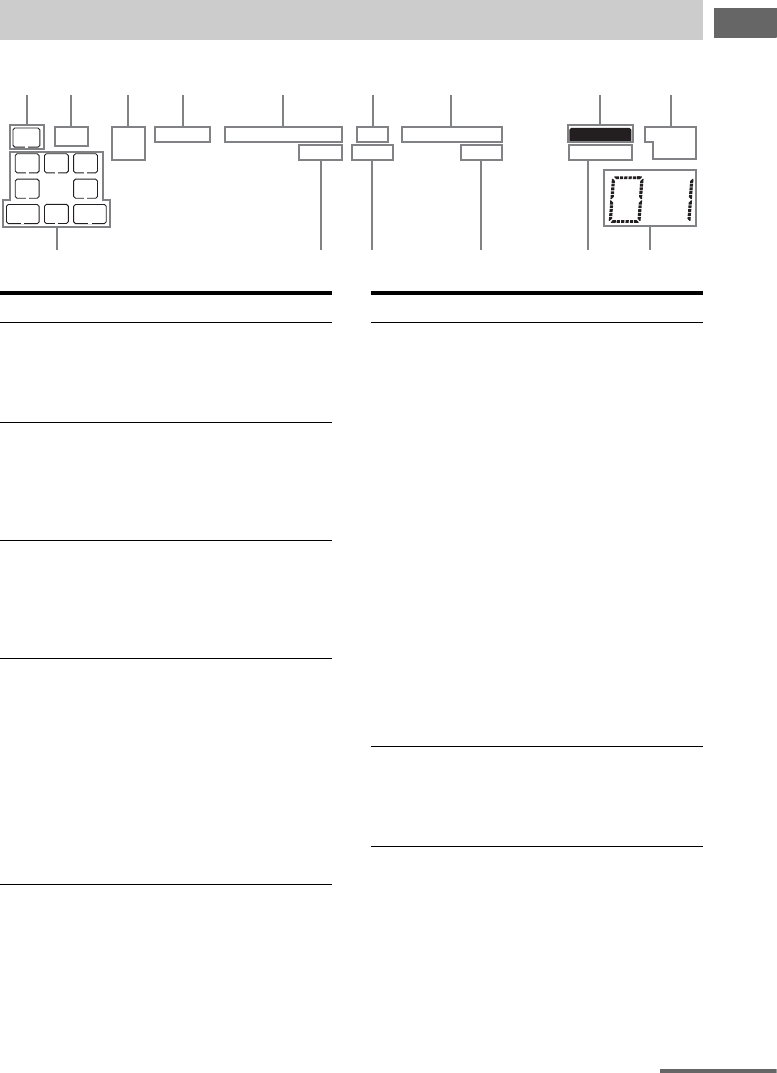
7
GB
Getting Started
About the indicators on the display
SW
LFE
SP A
SP B
LC
SL S
;
D EX
;
PLIIx
;
PL OPT DTS
-ES 96/24 MEMORY RDS ST
MONOD.RANGECOAXHDMI NEO:6
SB
SBL
R
SR
SBR
1 2 3 4 5 6 7 98
q;qaqg qdqf qs
Name Function
A SW Lights up when sub woofer
selection is set to “YES” (page
47) and the audio signal is
output from the SUB
WOOFER jack.
B LFE Lights up when the disc being
played back contains an LFE
(Low Frequency Effect)
channel and the LFE channel
signal is actually being
reproduced.
C SP A/SP B Lights up according to the
speaker system used. However,
these indicators do not light up
if the speaker output is turned
off or if headphones are
connected.
D ; D/
; D EX
“; D” lights up when the
receiver is decoding Dolby
Digital signals.
“; D EX” lights up when the
receiver is decoding Dolby
Digital Surround EX signals.
Note
When playing a Dolby Digital
format disc, be sure that you
have made digital connections
and that INPUT MODE is set
to “AUTO” (page 68).
Name Function
E ; PL/
; PLII/
; PLIIx
“; PL” lights up when the
receiver applies Pro Logic
processing to 2 channel signals
in order to output the center and
surround channel signals.
“; PLII” lights up when the
Pro Logic II Movie/Music/
Game decoder is activated.
“; PLIIx” lights up when the
Pro Logic IIx Movie/Music/
Game decoder is activated.
However, these indicators do
not light up if both the center
and surround speakers are set to
“NO” (page 40) and you select
a sound field using the A.F.D.
button.
Note
Dolby Pro Logic IIx decoding
does not function for DTS
format signals or for signals
with a sampling frequency of
more than 48 kHz.
F OPT Lights up when INPUT MODE
is set to “AUTO” and the
source signal is a digital signal
being input through the
OPTICAL jack (page 68).
continued


















